Moira Butterfield's Blog, page 18
January 3, 2021
Letting Go - The Art of Arranged Picture Book Marriage
Happy New Year to all of you. May 2021 bring us together in joy and wellness.
As the first Picture Book Den post, I want to start with a new resolution for Picture Book writers.
Do your best work and then let go.
Allow me to tell you why!
As a picture book writer, I’m dependent on the partnership with an illustrator to bring my book to life. This is usually (unless one of the partners in this relationship commands influence) a mediated relationship. It’s almost like arranged marriage – until the book comes out, the two parties talk through their respective people. While there might be inconsequential bickering or a misunderstood thought like in every arranged marriage, normally both sides are excited for what’s going to happen next – the wedding – the book.
The writer talks to the editor, the illustrator talks to the designer and the editor and the designer bring consensus understanding where the red lines are on each side. I say arranged marriage because often the illustrator is chosen by the publisher’s team – the editor and the designer together. If you’re lucky, they might ask you for an opinion. Just like those old-style arranged marriages in Victorian England.
As a picture book writer by trade, I’ve long come to understand that the publishing team knows what they are doing – they can visualise the final book (which is why they offered to publish it) and they have an idea of which illustrator will suit.
There are a number of factors to determine who should illustrate –
the content and the story itself determines the kind of illustrator to choose, the style of the illustrator for the market they want to sell the book in. The look that appeals to American readers might not be the same as what will appeal to European readership. And so depending on the marketing and publishing strategy, the designer and editor will come up with their shortlist.Then of course the illustrator needs to be available within the planned timetable and should be willing to illustrate and the terms need to be negotiated.Once all of that is done, the final choice will be communicated to the writer who will go and look them up on the Internet. Unless there is a press announcement for the book being published, there won’t be a peep until the cover is ready which is normally earlier than the inside pages – so the designer and editor can showcase it around the rights markets – in trade fairs and with internal sales and marketing teams.
As a writer, this is the first Zen step of letting go. What Buddha said, that. What Krishna said in Bhagvad Gita said – Do you best work and leave the consequences to the workings of the world.
That’s the most important thing for all writers, but especially picture book writers (who are not illustrators themselves) to keep in mind.
Let go of that vision in your head when you wrote the story.
Let go of the preconceptions of how the end-papers will look like or where the spreads are broken.
Let go of the expectation on how the covers will look or even what the burb will say.
When you let go, any little role you play during that design and production phase will feel like empowerment.
For example, when I wrote Shubh Diwali – the story is told in the point of view of a child. There is mention of family – but nothing specific.
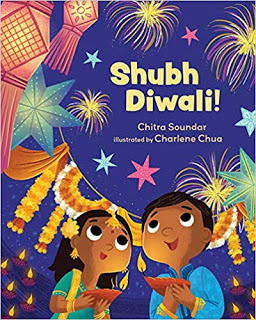
Charlene Chua, the amazing illustrator brought it to life – she created the characters in the story, she made them inclusive and she introduced blended families without having to say that in the story. That made the book stronger, inclusive and joyful to more families.
That is the power of collaboration especially when two (or more) people work separately but on the same thing.
There is a different kind of joy in working together too – thinking of characters together, coming up with the storyline that will best serve the illustration. That is a different experience, and that doesn’t always happen to all writers in the publishing world. And remember, not all writers and not all illustrators like to work together closely. By nature, many of us create best on our own. We like tinkering in our own spaces before we produce the work.
The flip side of allowing the writer and illustrator communicate is the spoon-feeding of imagination or the stress of too little or too much control. It doesn’t make sense for the writer to point out unnecessary things like the coat on the character should be red and I think there will be three cars parked on the street. Unless it’s critical to the story (in which case you will have either included it in the text or in the illustration notes [used sparingly]), the illustrator must be able to imagine the story in their own mind and come up with their art.
There are of course a few caveats:
a) There are stories that are drawn from real life – either of someone or the author. So, it makes sense that in those cases, the writer is able to provide visual references. Without cramping the artists’ style, the writer can guide the illustrator with the source material.
b) Stories that are culturally specific – when writing stories from a specific culture – it’s important to keep the details as authentic as possible. For example, when Frané Lessac illustrated Pattan’s Pumpkin, I was allowed to look at the roughs. I shared all of my research with the team but Frané too did a zillion % research on her own too.
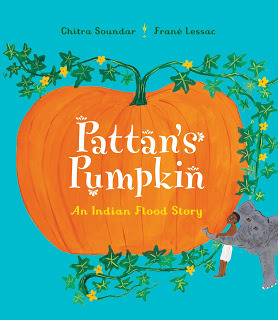
c) The market place – sometimes there might be a reason why something can or cannot be portrayed in a picture book (either in words or pictures) and that could dictate how the final look comes about.
When you let go, you’re often surprised.
When I wrote You’re Safe With Me, I had imagined (to my limited knowledge of art), a different style.
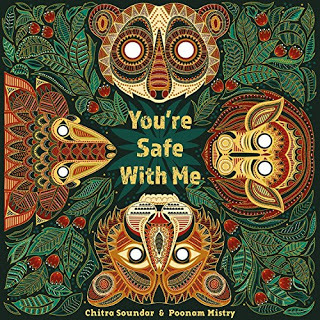
But when Poonam Mistry tackled the story in her style, she earned herself a place in the Kate Greenaway Medal shortlist. Not only that, children love her art. If you had asked me four years ago if children will enjoy a book busy and full of intricate drawings that adults love, I would have said no. But I’m a convert – children love the intricate art, the details they can find each time they read, and the mirage of images that makes them work hard to find the full picture.
When I write a story, in my head, there is usually a running movie. I write down what I see . I read aloud the words numerous times. Every edit is read aloud and every beat is checked. Even when not in rhyme. That story I imagined in my head, is just that. Then the editor reads the story and they imagine it while they read. Then the designer does the same thing. Then a big idea in broad strokes is sent to the illustrator with the text and they wait to see what the illustrator comes up with.
That’s like the suspense of the arranged marriage, isn't it? What will you discover on the day of the wedding? How beautiful will it be?
Some of you will wonder if I ever get to communicate with my illustrator? Yes and no. Often as a writer I don’t get to meet my illustrator unless they live in the same city or country. Sometimes we find ways to connect via video chats or emails. Most often I meet my illustrators (if at all) after the book has come out. However, contrary to belief, we never discuss the second book we might work on together.
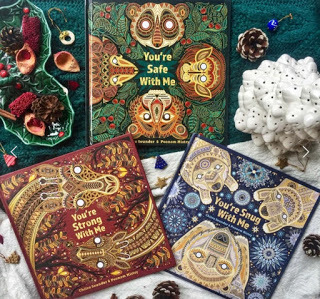
I’ve worked with Poonam Mistry on three books and we have met a few times. But each time, we will circle around the next book in question like – I’m still writing it. I can’t wait to read it. That’s it. It’s not my place to tell her or feed her ideas. The text must do that.
That is why the text must stand on its own. Remember that often the book is read aloud to children. If read in a class or in a library, the children might not even see the pictures closely until later. But the words must tell the story and there happens the magic when the listener imagines the story in their head. And that's when the connection is complete from writer to reader. Then the listener explores the art and they discover the same joy as the writer – matching their own imagination with what’s on the page.
The cogs turn, the wheels move and the reader is understanding the relationship between words and pictures and how imaginations vary and discovering new ways of telling a story.
So, my word of advice – Let go! Don’t try to control the process too much. And don’t expect to control the process too much. There is joy in letting go.
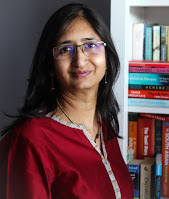
Chitra Soundar is an internationally published author of over 50 books for children. She is also an oral storyteller and writer of many things. Chitra writes picture books and fiction for young readers. Her stories are inspired by folktales from India, Hindu mythology and her travels around the world. Her books have been published in the UK, US, India & Singapore and translated into Chinese, German, French, Japanese and Thai. Find out more on her website and buy her books here.
December 20, 2020
Our Personal and Picture Book highlights of 2020
2020- What a challenging year it's been! I'm sure many of us will be glad to see the back of it and will welcome 2021 in with wide open arms!
But we at Picture Book Den wanted to use our final post of this turbulent year to shine a light on some of the positives, some of the rays of sunshine that we've noticed amongst the darkness.
We've chosen our personal and picture book highlights of 2020 and, as always, we would love to hear some of your highlights too.
Lucy Rowland:
Picture book highlight: Rain Before Rainbows, written by Smriti Halls and illustrated by David Litchfield.

"Rain before rainbows. Clouds before sun. Night before daybreak - a new day's begun".
This picture book is a perfect partnership of beautifully written, lyrical text and gorgeous illustrations and is all about finding optimism in the darkest of places. A perfect picture book for this year where rainbows have shone from so many people's windows as a sign of both hope and of our gratitude to all the key workers fighting this pandemic.
Personal highlight: For me, 2020 has been about finding my feet as a mum and watching my tiny baby grow into a cheeky, playful one-year-old. While lockdown was somewhat intense at times, (my husband was working 12 hour day and night shifts) I look back at it now as an incredible bonding opportunity for me and my son and I feel lucky we had this moment when the world stood still.
Clare Helen Welsh:
Picture book highlight: While We Can’t Hug, written by Eoin McLaughlin and illustrated by Polly Dunbar.
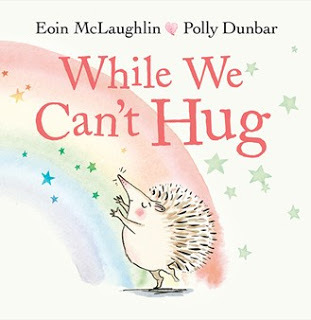
"They could not touch. They could not hug. But they both knew that they were loved."
From Eoin McLaughlin and Polly Dunbar, the makers of The Hug, this picture book is such an accessible and age appropriate way to tackle the trials of our times. The characters in the story find out that there are lots of ways of showing people they love them… while they can’t hug. It’s heartbreakingly beautiful and wonderfully simple. I’m certain this text will have helped many families in 2020, particularly at the beginning of the year when social distancing was strange and new to us all. It certainly helped me!
Personal highlight: My personal 2020 highlight has been working as a full-time author. Leaving my much-loved teaching career has meant that I have had more time to spend with my family and to immerse myself in the picture book world. Some of you may know I’ve been running a seven week online picture book course for Write Mentor, and I’ve managed to squeeze in five this year! It’s been wonderful connecting and working with like-minded people and the wonderful writers that join are a huge part of its success. I’m excited that I’ve also been asked to be Write Mentor’s Picture Book Writer in Residence 2021. I’ll be creating video and text-based content to support writers who love picture books as much as I do. So, all in all, lots to be thankful for and lots to look forward to.
Pippa Goodhart:
Picture book highlight: Wow! It's Night-Time, written and illustrated by Tim Hopgood
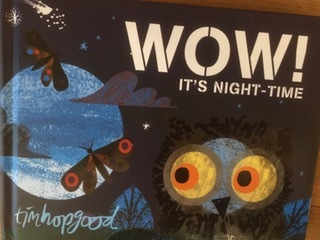
This board book has gloriously beautiful pictures of life at night observed by the owl at a time when 'we are tucked up in bed'. Weather and creatures and stars are all felt and noticed, and as dawn arrives the owls fall asleep ... just as you hope your child will be after you've read the book. The back endpaper reveals that the book is also a counting one, and there are one mole, two foxes, three rabbits, four bats, and so on up to ten stars to spot and count.
Personal highlight: The choice of book is a clue. Just as the world closed down, we had the joy of a new life in our family. Grandson Samuel lives not far away, and I'm able to give 'informal childcare', pram walking and lap jumping and gurning to elicit grins. And sharing his first book experiences. He is very much 2020's personal highlight. Workwise I've been lucky. School visits have gone, but online teaching writing for children via Cambridge University has grown hugely. I long for more time to do my own writing! Wishing everyone a happy end to this year, and blossoming into a better world next year.
Jane Clarke:
Picture book highlight: Wow! said the Owl, written and illustrated by Tim Hopgood
There seems to be a bit of a trend here, Pippa :-) This beautifully, but simply, illustrated book is all about Owl's joy and wonder at the natural world he sees when he stays awake all day. I've read it over and over and over to my four little granddaughters this year, (2 personally, and 2 in the States, via Skype). It's resonated with me every time, reminding me of the solace I've found in nature this year.
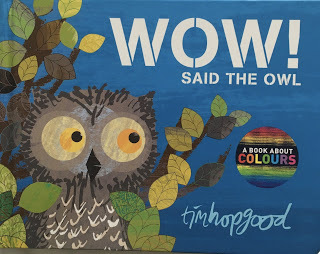
Personal Highlight: Well, it's been a teeth-gritting year, but (touch wood) loved ones have stayed afloat, and I've been able to keep myself relatively sane and busy with lots of walks and online yoga as well as writing. My heart goes out to those of you who have not been so fortunate. My personal picture book highlight is seeing Lucy Fleming's illustrations begin to come in for A Small Person's Guide to Grandmas – to be published by Walker Books – and being able to dedicate it to the fab 4 who inspired it.
Natascha Biebow:Picture book highlight: Old Rock (is Not Boring), written and illustrated by Deb Pilutti
This year, I've attended a lot of nonfiction craft webinars and I'm on the lookout for books that will inspire my own writing. What struck me about this picture book was the voice and unique point of view. The story is told by the rock, an inanimate object, and it immediately draws readers into the (true-ish) story of his life. Is it boring? Well, rock seems to sit in the same place all day long and he never goes anywhere. Has he even seen the world?! Beware of assumptions, though! Young readers will be surprised and delighted by the quirky adventures rock has really had in his lifetime - because, of course, rocks are around for a really long time (some cool lessons in geology and history here!). Old Rock challenges his friends' expectations - we can't judge people by how they look, and indeed tell whether they are 'boring' or anything else just by looking. Like rock, we are all special and each have unique experiences. Plus, sometimes, it's just nice to stay in one place for a time and enjoy nature – not boring, just 'being'.
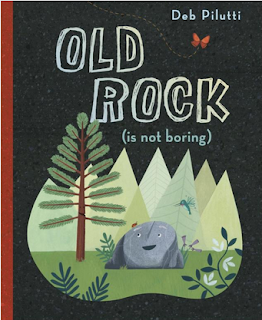
Personal Highlight: It's been a tough year to be creative, with so much unexpectedness, worryingness, juggling and far-awayness from family and friends. My personal highlight was winning the Irma Black Award, voted for by children all around the world, for my debut nonfiction THE CRAYON MAN: THE TRUE STORY OF THE INVENTION OF CRAYOLA CRAYONS in the Spring, and recording the acceptance speech in my garden with my son's help. I am reminded of the beauty of nature's colours, the wonder of our world and inspired to keep going by the children who need our stories. I have been lucky enough to do some virtual school visits and connect with family via techonology. It's kept me going, even as I try to write new stories.
December 13, 2020
Make Way for Art! How Picture Books Are Ideal for Building Visual Literacy in Digital Natives • By Natascha Biebow
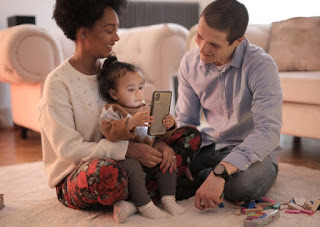
Photo by Andrea Piacquadio from Pexels
<!-- /* Font Definitions */ @font-face {font-family:"MS 明朝"; mso-font-charset:78; mso-generic-font-family:auto; mso-font-pitch:variable; mso-font-signature:-536870145 1791491579 18 0 131231 0;} @font-face {font-family:"Cambria Math"; panose-1:2 4 5 3 5 4 6 3 2 4; mso-font-charset:0; mso-generic-font-family:auto; mso-font-pitch:variable; mso-font-signature:-536870145 1107305727 0 0 415 0;} @font-face {font-family:"Trebuchet MS"; panose-1:2 11 6 3 2 2 2 2 2 4; mso-font-charset:0; mso-generic-font-family:auto; mso-font-pitch:variable; mso-font-signature:647 0 0 0 159 0;} /* Style Definitions */ p.MsoNormal, li.MsoNormal, div.MsoNormal {mso-style-unhide:no; mso-style-qformat:yes; mso-style-parent:""; margin:0cm; margin-bottom:.0001pt; mso-pagination:widow-orphan; font-size:12.0pt; font-family:"Times New Roman"; mso-fareast-font-family:"MS 明朝"; mso-fareast-theme-font:minor-fareast; mso-ansi-language:EN-US;} a:link, span.MsoHyperlink {mso-style-priority:99; color:blue; mso-themecolor:hyperlink; text-decoration:underline; text-underline:single;} a:visited, span.MsoHyperlinkFollowed {mso-style-noshow:yes; mso-style-priority:99; color:purple; mso-themecolor:followedhyperlink; text-decoration:underline; text-underline:single;} .MsoChpDefault {mso-style-type:export-only; mso-default-props:yes; font-size:10.0pt; mso-ansi-font-size:10.0pt; mso-bidi-font-size:10.0pt; mso-fareast-font-family:"MS 明朝"; mso-fareast-theme-font:minor-fareast; mso-fareast-language:JA;}size:595.0pt 842.0pt; margin:72.0pt 90.0pt 72.0pt 90.0pt; mso-header-margin:35.4pt; mso-footer-margin:35.4pt; mso-paper-source:0;} div.WordSection1 {page:WordSection1;}The readers of our picture books are digital natives.
They are driven by the visual.
The Internet has completely revolutionised the way images serve communication. People currently upload and share 1.8 billion photos every single day. On Instagram alone, 50 billion photos have been uploaded since 2010.
In fact, 90% of what we take in in the world is visual.
Surprising, even reading is visual: In a study published in the Journal of Neuroscience, researchers at Georgetown University Medical Center found that when we look at a known word, our brain sees it like a picture, not a group of letters needing to be processed. Neurons in a small brain area in the left side of the visual cortex remember how the whole word looks — using what could be called a visual dictionary.
Pictures are the new language. Yet the focus in education is very much on reading and writing words, on verbal literacy – not on art, not on interpreting and analysing images. But, now more than ever, children need visualliteracy.
Why?
“According to researchers, educators, museum professionals, filmmakers, and artists, visual literacy can improve creativity, critical thinking, educational achievement, empathy towards others, and ability to decipher technology.” (source OpenEd)
If you’ve ever read a picture book with a child, you’ll appreciate that they can read it long before they can read the words. This is of course because visual learning is the precursor to verbal learning.
 Photo by
mentatdgt
from
Pexels
Photo by
mentatdgt
from
Pexels
In his time at the Toledo Museum of Art, Brian Kennedy did some research into visual literacy: “Nearly 30% of the brain’s cortex is devoted to visual processing. More than the other human senses. The optic nerve has over a million nerve fibers. Ninety percent of all the information we take in from the world we take in visually. With so much of the brain’s cortex devoted to visual processing, it is logical that visual literacy is the key sensory literacy.”
“It’s as important to be visually literate, to understand pictures and how they affect us, as it is to be word-literate,” Kennedy says. “Being fluent in the language of images gives us an advantage at school, at work, and at home.”
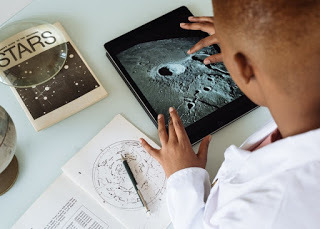
Photo by RF._.studiofrom Pexels
<!-- /* Font Definitions */ @font-face {font-family:"MS 明朝"; mso-font-charset:78; mso-generic-font-family:auto; mso-font-pitch:variable; mso-font-signature:-536870145 1791491579 18 0 131231 0;} @font-face {font-family:"Cambria Math"; panose-1:2 4 5 3 5 4 6 3 2 4; mso-font-charset:0; mso-generic-font-family:auto; mso-font-pitch:variable; mso-font-signature:-536870145 1107305727 0 0 415 0;} @font-face {font-family:"Trebuchet MS"; panose-1:2 11 6 3 2 2 2 2 2 4; mso-font-charset:0; mso-generic-font-family:auto; mso-font-pitch:variable; mso-font-signature:647 0 0 0 159 0;} /* Style Definitions */ p.MsoNormal, li.MsoNormal, div.MsoNormal {mso-style-unhide:no; mso-style-qformat:yes; mso-style-parent:""; margin:0cm; margin-bottom:.0001pt; mso-pagination:widow-orphan; font-size:12.0pt; font-family:"Times New Roman"; mso-fareast-font-family:"MS 明朝"; mso-fareast-theme-font:minor-fareast; mso-ansi-language:EN-US;} a:link, span.MsoHyperlink {mso-style-priority:99; color:blue; mso-themecolor:hyperlink; text-decoration:underline; text-underline:single;} a:visited, span.MsoHyperlinkFollowed {mso-style-noshow:yes; mso-style-priority:99; color:purple; mso-themecolor:followedhyperlink; text-decoration:underline; text-underline:single;} .MsoChpDefault {mso-style-type:export-only; mso-default-props:yes; font-size:10.0pt; mso-ansi-font-size:10.0pt; mso-bidi-font-size:10.0pt; mso-fareast-font-family:"MS 明朝"; mso-fareast-theme-font:minor-fareast; mso-fareast-language:JA;}size:595.0pt 842.0pt; margin:72.0pt 90.0pt 72.0pt 90.0pt; mso-header-margin:35.4pt; mso-footer-margin:35.4pt; mso-paper-source:0;} div.WordSection1 {page:WordSection1;}But what is visual literacy exactly and what does it have to do with picture books? Or with teaching and valuing art and design for young children?
To be visually literate, a person should be able to ‘read’ and think critically about images. If you are visually literate, you should be able to go from passively seeing an image to really LOOKING. This means being able to interpret images meaningfully, by first looking at images, then analysing them, and eventually situating them in terms of their cultural, social and historical context.
Images can convey meaning with immediacy in a multiple ways, and have increasingly become an essential tool for generating innovative solutions in business, design, science and technology, among numerous other fields. I previously blogged about using doodlingas a tool for my writing and business. Here is another really cool tool: The Periodic Table of Visualization Methods shows just how versatile images can be in a myriad of contexts.
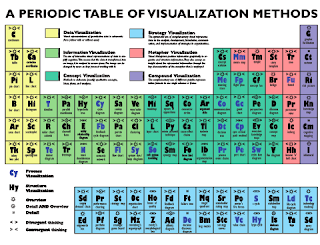 "Towards A Periodic Table of Visualization Methods for Management"
"Towards A Periodic Table of Visualization Methods for Management"Lengler R., Eppler M. (2007)
Being able to both understand images and convey meaning through them are key skills that future generations of children will need more than ever.
As picture book creators, we know just how powerful images are. We know that how words and pictures work together in a picture book creates something that is more than the sum of its parts.
It is ART.
Art that tells a story. ART that communicates powerful messages and evokes beautiful things:

This powerful image from Small in the City by Sydney Smith shows a little girl looking for her lost cat, small in the city, just like her. No words are needed to convey the emotion of this scene: the art with its use of colour, composition and fluid lines conveys the message beautifully.

In his book Grand Canyon, Jason Chin paints in masterful realistic detail the majestical rock formations and the tiny creatures that live in the Grand Canyon so that readers everywhere can experience this beautiful place and its history. Chin's impactful artwork compositions, combining macro and the micro views, guide readers in making connections between the elements immediately visible and those observed through taking a closer look.
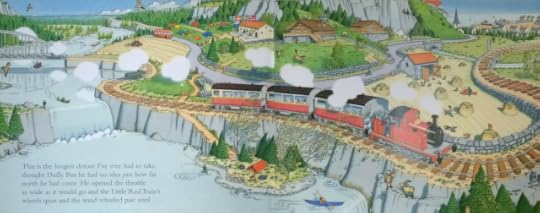
Benedict Blathwayt's stunning watercolours are packed with so much detail for young readers to pore over! In this spread from Green Light for Little Red Train the train speeds through a mountain landscape, but it is all the delightful additional 'mini' stories that invite a closer look.
 In this story about the boy Matisse, inspired by a lifetime surrounded by art in nature and at home, Hadley Hooper instantly creates a visual connection between the boy's world and the grown-up artist's famous (actual) paintings through her evocative, colourful, bold picture book artwork. From the Irridescence of Birds by Patricia McLaughlan and Hadley Hooper
In this story about the boy Matisse, inspired by a lifetime surrounded by art in nature and at home, Hadley Hooper instantly creates a visual connection between the boy's world and the grown-up artist's famous (actual) paintings through her evocative, colourful, bold picture book artwork. From the Irridescence of Birds by Patricia McLaughlan and Hadley Hooper 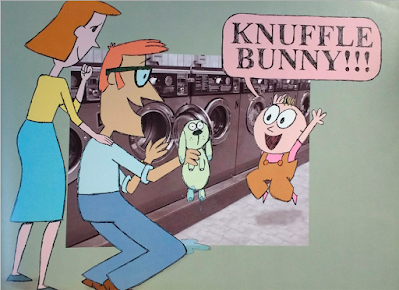
No need for words in this instantly-recognizable scene. Mo Willems' inspired combination of photographs and comic-style illustrations conveys the simple joy of being reunited with a favourite toy. From Knuffle Bunny by Mo Willems

Rosie's Walk by Pat Hutchins is a gem with its bold imagery and simplicity, yet clever complexity. Even the youngest of children can spot the joke in the images -- the wily fox is always one step behind the hen in this classic example of how the art speaks volumes.

This illustration from Chris Wormell's One Smart Fish, the story of a clever fish who dreams of walking on land, ends with this amazing image - such a lot of information about the story of evolution is conveyed in just one piece of art!
As Picture Book creators, we recognize the importance of including all kinds of art and diverse imagery in picture books so that children everywhere can really see themselves and their world reflected in the pictures they encounter in books.
 From Susan Laughs by Jeanne Willis and Tony Ross
From Susan Laughs by Jeanne Willis and Tony Ross
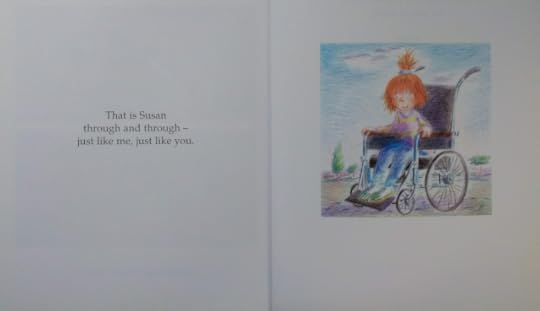
Tony Ross' vibrant, lively pencil drawings depict Susan experiencing all the emotions and enjoying all the activities every child loves - from painting, to go-karting to playing with Dad. The final image might surprise readers and encourages them to consider their assumptions and empathise with Susan, unique, just like every child. From Susan Laughs by Jeanne Willis and Tony Ross

With beautiful textured paintings, Britta Teckentrup uses simple and bold imagery to pack in a heartfelt and universal message about belonging. From Under the Same Sky by Britta Teckentrup
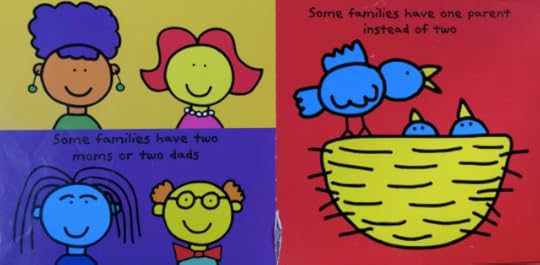
Todd Parr's distinctive, simple, colourful images speak first, almost before the words - conveying powerful messaging in bold artwork. From The Family Book by Todd Parr

Evocative, imaginative and empowering artwork fills this beautiful book, Dreamers by Yuyi Morales, empowering children to find a home in a world of books and dare to dream big.
So many different styles of ART with powerful visual messaging!
From an early age, picture books are perfect for scaffolding children in order to extend their innate visual literacy. By encouraging parents and teachers to value the visual art form that is picture books, and engage in conversations that prompt children to really LOOK and think critically about their pictures – even older children – could we be helping to set them up with critical skills for a better future in our digital world?
Make way for art!
____________________________________________________________________
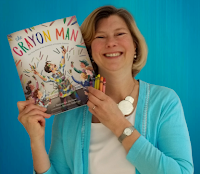 Natascha Biebow, MBE, Author, Editor and Mentor
Natascha Biebow, MBE, Author, Editor and Mentor Natascha is the author of the award-winning The Crayon Man: The True Story of the Invention of Crayola Crayons, illustrated by Steven Salerno, winner of the Irma Black Award for Excellence in Children's Books, and selected as a best STEM Book 2020. Editor of numerous prize-winning books, she runs Blue Elephant Storyshaping, an editing, coaching and mentoring service aimed at empowering writers and illustrators to fine-tune their work pre-submission, and is the Editorial Director for Five Quills. She is Co-Regional Advisor (Co-Chair) of SCBWI British Isles. Find her at www.nataschabiebow.com
<!-- /* Font Definitions */ @font-face {font-family:"MS 明朝"; mso-font-charset:78; mso-generic-font-family:auto; mso-font-pitch:variable; mso-font-signature:-536870145 1791491579 18 0 131231 0;} @font-face {font-family:"Cambria Math"; panose-1:2 4 5 3 5 4 6 3 2 4; mso-font-charset:0; mso-generic-font-family:auto; mso-font-pitch:variable; mso-font-signature:-536870145 1107305727 0 0 415 0;} @font-face {font-family:"Trebuchet MS"; panose-1:2 11 6 3 2 2 2 2 2 4; mso-font-charset:0; mso-generic-font-family:auto; mso-font-pitch:variable; mso-font-signature:647 0 0 0 159 0;} /* Style Definitions */ p.MsoNormal, li.MsoNormal, div.MsoNormal {mso-style-unhide:no; mso-style-qformat:yes; mso-style-parent:""; margin:0cm; margin-bottom:.0001pt; mso-pagination:widow-orphan; font-size:12.0pt; font-family:"Times New Roman"; mso-fareast-font-family:"MS 明朝"; mso-fareast-theme-font:minor-fareast; mso-ansi-language:EN-US;} a:link, span.MsoHyperlink {mso-style-priority:99; color:blue; mso-themecolor:hyperlink; text-decoration:underline; text-underline:single;} a:visited, span.MsoHyperlinkFollowed {mso-style-noshow:yes; mso-style-priority:99; color:purple; mso-themecolor:followedhyperlink; text-decoration:underline; text-underline:single;} .MsoChpDefault {mso-style-type:export-only; mso-default-props:yes; font-size:10.0pt; mso-ansi-font-size:10.0pt; mso-bidi-font-size:10.0pt; mso-fareast-font-family:"MS 明朝"; mso-fareast-theme-font:minor-fareast; mso-fareast-language:JA;}size:595.0pt 842.0pt; margin:72.0pt 90.0pt 72.0pt 90.0pt; mso-header-margin:35.4pt; mso-footer-margin:35.4pt; mso-paper-source:0;} div.WordSection1 {page:WordSection1;}
December 6, 2020
How Long Does it Take for a Picture Book to be Published? By Pippa Goodhart
This is one of those questions that picture book makers often get asked, and its one where the annoying answer tends to be, ‘It depends.’
Back in 1981 when I worked in Heffers Children’s Bookshop in Cambridge I was lucky enough to go on a tour of the Ladybird Book factory in Loughborough. It was an exciting place! Full of noisy machines printing, folding, chopping pages, sticking on covers, then books shooting out onto conveyor belts at speed. But Ladybird didn’t just manufacture the physical books in that building. Upstairs were offices where creators wrote and drew and designed. And they proudly showed their Ladybird book of the Royal Wedding of Prince Charles and Lady Diana Spencer. Their wedding was on the 29th of July. The Ladybird book was created, manufactured, and distributed into shops to be published on August 3rd. Not a picture book in the sense of a big format twelve-spread kind of picture book, but a book with more pictures than text, created and printed and published in just five days.
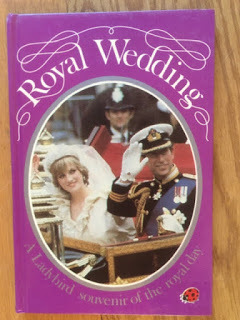
Of my own picture books, the one that took the longest from the point of interesting a publisher to arriving in shops was Chapatti Moon. Looking back I see that the editor who published it first showed interest in May 2012, and publication finally happened in September 2017! So that one took more than five years, and that’s not counting the writing of it! But it’s a book I love, with wonderful illustrations by Lizzie Finlay, and it has remained in print and is still selling well, so proved worth the wait.
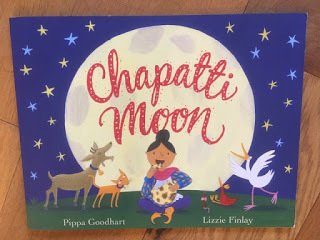
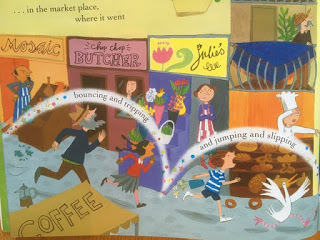
But now I’m going to tell about a new picture book of mine which has taken a much more typical couple of years from publisher interest to being a book for sale in shops, but with very untypical timing of both ends of that process.
I actually made a note of the exact timings of the start of this publication journey because I knew I’d look back and not quite believe it. At 9.30 am on the 2nd of October 2018 I sent All Sorts to my agent. She read it and sent it to Flying Eye. At 9.45am (really!) she got a response from Sam Arthur saying, ‘I like the new text’. An offer was made by Flying Eye within days, and contracts signed the following month. Emily Rand set to work on illustrations, and publication was set for May 2020. And then we all know what happened. Covid19, lockdown, bookshops shut, and many many book publications delayed. But as things eased in September, All Sorts was published, and I’m delighted with it –


The delayed publication actually meant that the little 'elephant' the book was dedicated to had time to be born before the book was. Here he is at two weeks old, being read his book! -
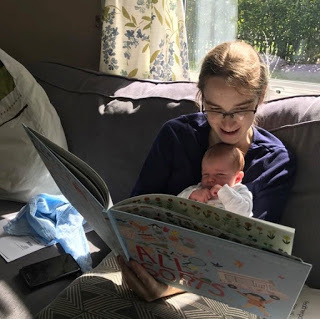
So how long does it take for a picture book to get published? It all depends …
Downloadable worksheets worksheets for All Sorts
November 29, 2020
The 12 Cards of Shhh-You-Know-What (with Mini Grey)

Little things please little minds. I’ve always loved making little things, from teeny books to spreads of tiny clay food for my doll's house when I was a child. This post is about home-made Christmas Cards and how obsessions and picture book themes can surface in the other things we make just for fun.
It all started 20 years ago when I was at Brighton University finishing an MA in Sequential Illustration. One task we were set was the Batch Production Project. You had to make 5 of something, and each item had to cost less than a pound to make. All sorts of things got made, from paperweights to matchbox books to pocket orreries. And then the massive fun was running our own stand at the London Artists’ Book Fair and selling our stuff. One thing I learned was maybe the most effective way to add value to a scrap of paper is to turn it into a book.
The challenge for the Christmas card – is to stick around. Will it earn a place on someone’s shelf, or will it be thrown out at twelfth night?
The ground rules for my cards were: to fit in a small envelope usually around 10X11cm, and be made of cheap stuff. Here are 12 of them, from the last 20 years.
At Number 12 – from 2000: Fragments of the True Santa
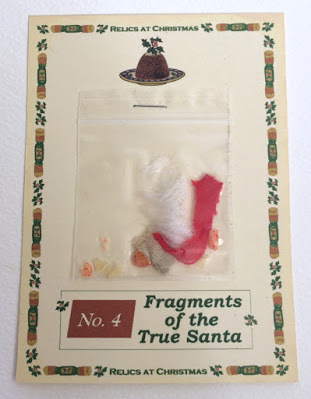
At last! Definite proof of Santa’s existence with these genuine fragments from the Relics at Christmas range. I can’t remember what I made the fragments out of – maybe it was real earwax...it really doesn't bear thinking about. Here's what was inside:

11 – 2003: The Inventors at Christmas Party Hat
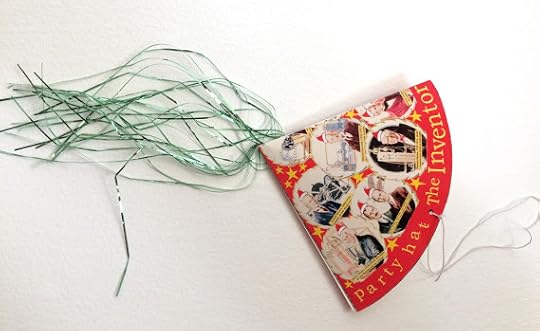
It’s important to remember the Inventors at Christmas. This card from 2003 is also a tiny party hat, featuring Orville and Wilbur Wright, Thomas Edison, Alexander Graham Bell, Frank Whittle and many more. Sadly no female inventors: nowadays I’d definitely have had some there.
10 – 2004: Cracker
 I was so excited to find those cardboard bangy bits (that go in crackers and explode when you pull them) were for sale at my local Oxford Art Shop (Broad Canvas). This is an attempt to make a card that is also a cracker. The idea is two people pull either end and it goes bang.
I was so excited to find those cardboard bangy bits (that go in crackers and explode when you pull them) were for sale at my local Oxford Art Shop (Broad Canvas). This is an attempt to make a card that is also a cracker. The idea is two people pull either end and it goes bang.

Hidden in the middle is the pointless gift, small paper hat and joke (sort of). I didn’t have enough bangers to test it properly so I hope everyone managed to make their cards explode.
09 – 2008: The Pocket Finger Panto Theatre

I have an ongoing obsession with model theatres. I often think of picture books as being a bit like theatres, and in The Bad Bunnies' Magic Show it definitely is. I was given a teeny toy theatre from Prague by my sister Pippa and that inspired this pocket theatre. It folds flat. Dress your fingers up and act out your favourite panto scene.
08 – 2009: The Christmas Choc Box

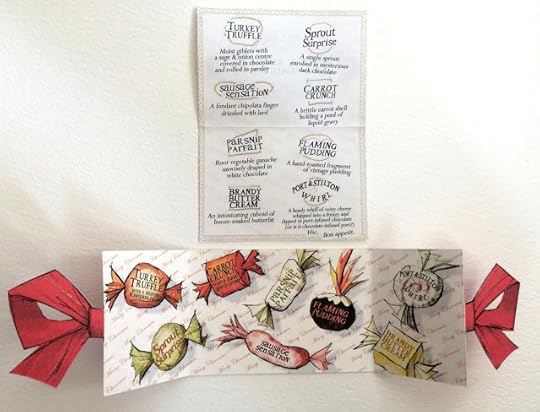 This one was inspired by
Jim
, my illustrated version of the Hilaire Belloc cautionary tale. The book starts with an open-out present to Jim, and there are a lot of sweets throughout, so I used the same open-out format and imagery to make the Christmas Dinner Chocolate Selection, an unwise mixing of Turkey, Sprouts and the usual suspects with light and dark chocolate, praline, ganache, and so on. A card to make you feel slightly queasy.
This one was inspired by
Jim
, my illustrated version of the Hilaire Belloc cautionary tale. The book starts with an open-out present to Jim, and there are a lot of sweets throughout, so I used the same open-out format and imagery to make the Christmas Dinner Chocolate Selection, an unwise mixing of Turkey, Sprouts and the usual suspects with light and dark chocolate, praline, ganache, and so on. A card to make you feel slightly queasy. 07 – 2010: Three by the Seeds

This one again was book-inspired. In Three By The Sea, the threesome Cat Dog and Mouse are given packets of herbs by a passing foxy stranger. This card includes a packet of herb seeds to grow your own stuffing. The seeds were a bit random as they were everything I could find in the garden shed. There were mixed reports about what came up.
06 – 2011: Insect House

I so wanted to make a card that was also a house. On my teeny card scale, it had to be an Insect house. And the chance to check in with how Christmas is going for the insects.

Uncle Fly is wrestling with sellotape, the young ants are playing charades, and in the attic the little maggots are looking in their stockings. I’m just a bit worried about what Mrs Weevil is up to…
I’ve always wanted to feature insects in a picture book, and the project I’m working on at the moment features insects and theatres. Most exciting.
05 – 2012: Pocket Planet
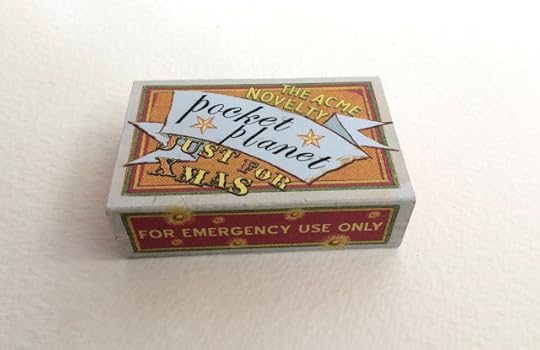
This is where a matchbox obsession set in. Could you make a Christmas card that was also a matchbox? What could you put in a matchbox? What about a spare Pocket Planet, just in case of an emergency.
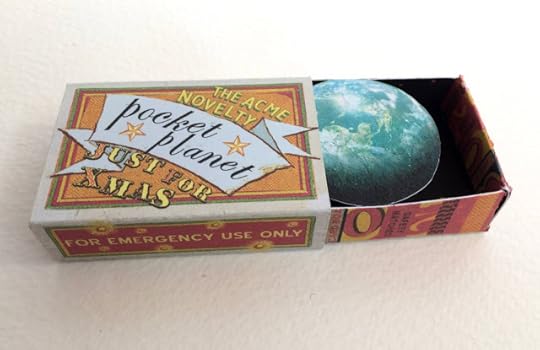
With instructions on the back for what to add to make your habitable planet (then simply wait for 4 ½ billion years and – Hey Presto!:
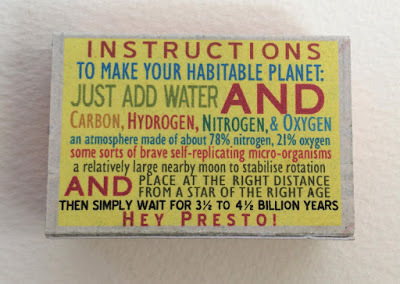
Now, dear reader, this card was a painful lesson about Royal Mail Postage prices. Yes, it was but matchbox-sized and fitted in a teeny envelope, but it was 2 ½ cm deep, and this means a lot in postage prices – it meant it was a Large Letter. So most of the pocket planets were impounded in mail depots and the unlucky recipients had to go and pay at least £1.70 to release their miniscule item.
04 – 2013: The Pocket Fairy Godmother

In 2013 I’d been running an after-school club in paper engineering at my son’s primary school. This card happened after we’d looked at angle folds, and I found out you could use the power of a tiny angle-fold to make wings beat. Everyone needs one….a pocket Fairy Godmother…
03 – 2014: The Cabinet of Mystery
This card I’d accidentally made when messing around with my book The Bad Bunnies' Magic Show. The Bad Bunnies have locked their magician the Great Hypno in a trunk and are attempting his tricks and unleashing unexpected transformations. I thought this could be an excuse for some crazy paper engineering, so the first sketch model book of the Bad Bunnies had things like woven panel dissolves in it. Eventually I realised less in more, and all you need for picture book magic is your reader’s imagination and maybe an unexpectedly-shaped page. The Glenda Cabinet of Mystery never got into the book, but it managed to be a card. Here’s Glenda disappearing and reappearing. (She's Brenda in the book!)
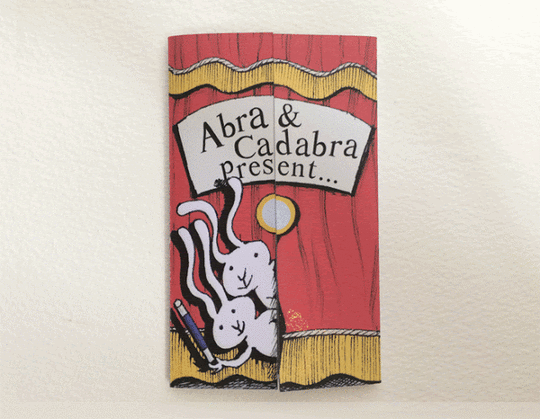
02 – 2018: Slight Accident
In 2018 it really looked like our planet was in trouble and big changes needed to happen to grow biodiversity and cut carbon dioxide. It still looks that way. But Extinction Rebellion and Greta Thunberg were also happening, so hope was in the air too. Christmas is a time for presents, and our planet is a present that we pass to future inhabitants of Earth: what sort of gift are we bequeathing to the Earthlings of 2050? So what if we REALLY mess it up, and pass on a broken planet?


This seemed altogether a too grim way to leave things, so I put in another hidden layer, from the People of 2019…because you’d have to be NUTS to break your only home. We have to give the Earthlings of 2050 more wildlife, and less carbon dioxide.

01 – 2019: Waving or Drowning?
So here we reach last year. Pollocks Toy Museum in London is the Mecca for toy theatre lovers, and I’d been involved with a project at Pollocks that autumn. Artists made their own toy theatres to in response to Pollock's collection. I was allowed to look through the Pollock Toy Theatre scenery archive, and loved the stormy sea scenery. So this card was inspired by the water-scenery in Pollocks Toy Theatres.
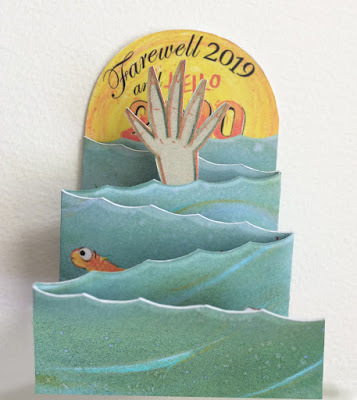
My card was waving goodbye to 2019 and waving in a new decade, which seemed hopeful then. But my hand was also maybe drowning and the sea contained hidden perils.

And now, from the perspective of What-On-Earth-Happened in 2020, I just don’t know where to go next.

I never throw away a home-made card. I’ve just looked on my shelf, and there are some treasures that sit there all year round, not just for Christmas. One of my utter favourites is this Christmas goose in peril by that most marvellous maker of ingenious things, Emily Gravett. (It came with a whole disguise to wear to evade being eaten.) Here it is, flanked by a watercolour tree by Amanda Hellberg, a Kevin from Sarah McIntyre, and a colour-changing dinosaur by Caroline Whitehead.


Mini's latest book-involvement is The Book of Not Entirely Useful Advice, with AF Harrold.
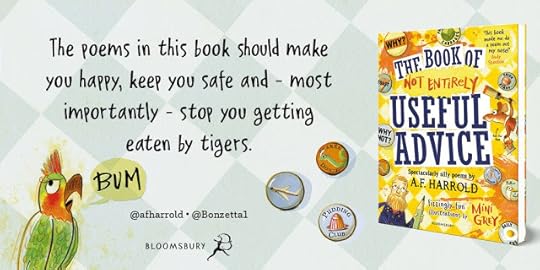
November 22, 2020
Now We Are One! Picture books for one-year-olds by Lucy Rowland
Last year, when my son was still teeny-tiny, I asked the mums in our NCT group which books their babies were particularly enjoying. I wrote about their answers for Picture Book Den.
Recently, our children celebrated their first birthdays- a big milestone, which perhaps felt even bigger given the very strange year we've had- and I thought it would be nice to catch up with the mums and babies once again. This time I wanted to find out which picture books they are enjoying NOW WE ARE ONE!
Of course, most of the babies still like board books with their sturdier pages (for enthusiastic hands), and novelty books with their flaps, textures, buttons and sounds, but some of the babies are starting to branch out into more traditional picture books too.
Answers included the classics: 'Guess How Much I love You' by Sam McBratney and Anita Jeram, the rhythmic 'We're Going on a Bear Hunt' by Michael Rosen and Helen Oxenbury, 'Goodnight Moon' by Margaret Wise Brown and Clement Hurd, 'The Tiger who Came to Tea' by Judith Kerr, 'Not Now Bernard' by David McKee and the ever-popular 'Peepo' and 'Each Peach Pear Plum' by Janet and Alan Ahlberg.
But there were also some picture books which were either less familiar to me or which took me by surprise but are, never-the-less firm favourites with these one-year olds.
My own son, Benji, enjoys:
'The Flying Bath' by Julia Donaldson and David Roberts.
My sister gave us this one, as her own son had enjoyed it so much. It was not a book I'd come across before but, with its minimal text and simple bouncy rhyme, Benji loves following the journey of the flying bath as it travels around the world helping animals with their water-related problems. I think he enjoys the repetitive refrain- 'Wings out and off we fly, the flying bath is in the sky!' I like the soft colours and patterns used in the illustrations.
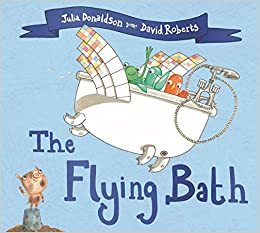
Grayson's mum said: Grayson loves Oi Dog! by Kes Gray and Jim Field I think it's the bright, bold colours and the funny voices that I do!
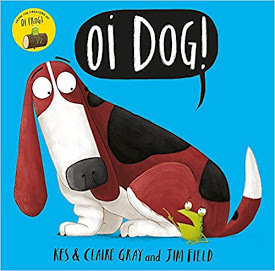
Poppy's mum said: Poppy likes 'So Much' by Trish Cooke and Helen Oxenbury.
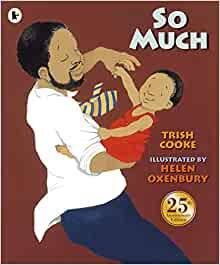
Flora's mum said: Flo really likes 'I want my hat back' by Jon Klassen.
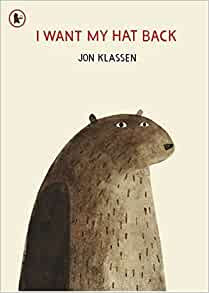
Teddy's mum said: Teddy's favourite is 'Chu's Day' by Neil Gaiman and Adam Rex
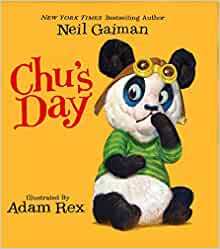
Joseph's mum said: Because I read it almost every day over lockdown, Joseph likes 'What the ladybird heard on holiday' by Julia Donaldson and Lydia Monks. It's also my favourite of the trilogy!
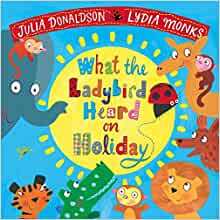
Ralph's mum said: Ralph really likes non fiction picture books. He also has some lovely non-fiction 'Hello World' board books by Jill McDonald. He likes Solar System, Weather and Backyard Bugs. He really loves the bright and colourful illustrations and frequently after we've finished reading it, he will pick it straight up so we can read it again! There is a central text to read and then extra little facts for when he is older.
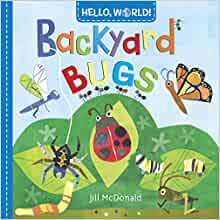
Holly's mum said: Holly likes 'Ten Little Fingers and Ten Little Toes' by Mem Fox and Helen Oxenbury. She will give us kisses at the end of the book so that makes it my favourite to read to her!
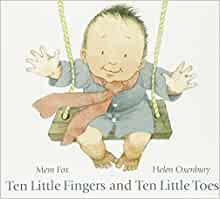
Archie's mum said: Archie loves 'Handa's Surprise' by Eileen Browne. It's a definite favourite! We have a story sack version of it and he loves playing with all the different fruits and the animal masks!
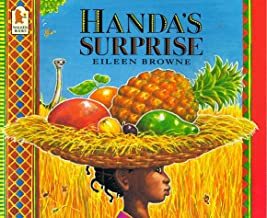
So there we have it- top picture book picks as chosen by our one year olds! Which picture books do you recommend for this age group?
November 15, 2020
The Thoroughly Creative Picture Book Author by Addy Farmer
A thoroughly creative picture book author? Yes, um, that’s what we ALL are, isn’t it? I mean, it’s difficult to write a picture book text without creativity? So, I’ll begin with a definition (warning: may stray from any number of dictionaries). For me, being a “thoroughly creative author’’ is to be a writer prepared to seek out her creative opportunities. She wants to be published traditionally but is also prepared to think widely about other routes to being published.
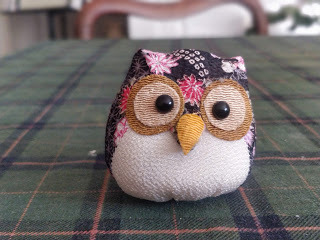
Okay, so let me expand a little.
I am published by two traditional publishers, Walker and Random House. My picture book Siddarth and Rinki came out with Verna Wilkin’s magnificent publishing house, Tamarind (which was subsequently absorbed into the Penguin Random House group). It was wonderful to work with an editor and to have Karin Littlewood illustrate the story. My next picture book, Worlds Apart was signed to one publisher but, after an agonising length of time; one foreign rights deal, one publishing house change and three illustrators later; it was dropped when it failed to gain interest at Frankfurt. Harsh but true. It taught me a few things:
Never wait around for a book to be published. Always be at work on the next one. Time is preciousKeep up with your reader and what they like - I didn’t want to get stuck in the past with my imagined reader. The children’s market is shifting and dynamic. Keeping up with what children and their carers are reading. This does NOT interfere with artistic integrity - it is a way of informing your creativity.Get organised! I went on a pre-pandemic writing retreat back in January with my excellent pals, Juliet Clare Bell and Rebecca Colby. There, I got to grips with being organised with laser-like purpose. Wahay! I set flexible goals and objectives for 2021 and it has framed my approach to this writing year! I work hard and I work smart.Think creatively about who you can write for.
Okay, thinking creatively is the biggy. Yes, of course I would like to be published in a traditional way again. I love being part of a professional team; I love being edited; I love the to and fro of illustrations and edits. I also love knowing that a big publishing company has endorsed my writing. That is partly what gave me the confidence to broaden my thinking and branch out into writing for non-traditional routes.

A Bagful of Stars
My first commissioned picture book was, A Bagful of Stars with the brilliant Bridget Marzo illustrating. The story of A Bagful of Stars was one of hard work and absolute joy. The queues for signing were looooooooong! Bridget and I had a ball!
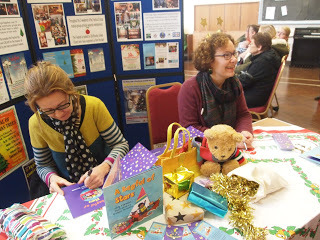
This book came about through luck and making connections and then quite frankly just asking for the job. Someone I knew from The Rotary Club of Scunthorpe approached me in my capacity of ‘the only children’s writer in town’, to help her find a children’s author who could come up with a Christmas picture book for them. I said, ‘I’ll do it!’ even before the flat fee was mentioned. Oops. So, think for a mo before you agree to anything. For me, I had a track record as a published writer and there was no reason to accept a relatively small fee. What swayed me to accept the project was my heart. What came out of the project was definitely not a personal financial success and this is something you must think about on a personal level but also perhaps to ensure that we, as a body of picture book writers, are given the professional recognition we deserve.
Working on a A Bagful of Stars gave me a few insights into undertaking and running your own picture book project
The book went on to be reprinted and is still being bought today for Christmas. And yes, I will be investigating selling through this fantastic sounding bookshop.org.
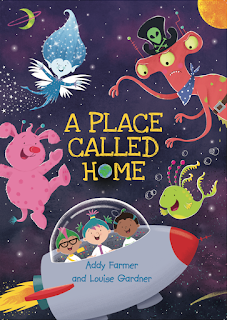
How did I get more work from there?
I used that experience of working with creative partners in theatre and music (all found via my local council), to suggest another more ambitious project - a picture book which could be adapted as a piece of musical children’s theatre. A Place called Home, illustrated by the wonderful Louise Gardner, was conceived and developed with the North Lincs Music Hub and Rhubarb theatre in Lincoln. This project, from 2017, was properly funded by the Arts Council and is still used by North Lincs primary schools and performed by Rhubarb Theatre.
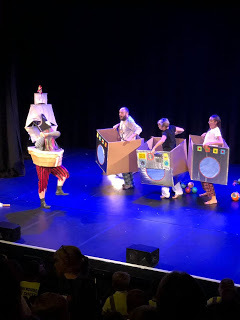
An exercise in thoroughly creative writing
From then on, I was already thinking about other opportunities. I examined my own hobbies and interests. Was there anything in those extra-curricular activities which might transfer into ideas for a picture book?
I made a list!
Clouds
Space
Family
Cake!
Flying
Medieval history
Peat and the environment
The great Outdoors
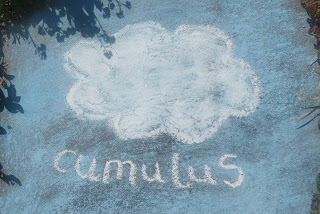
I might expand the list like so …
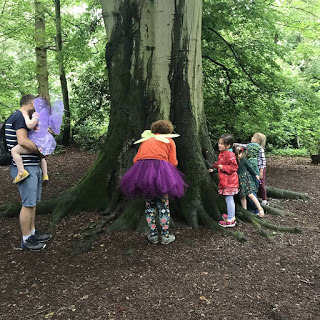
Be thoroughly creative!
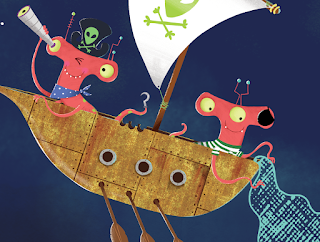
Does this sound like hard work? Yep and I’m aware it’s not everyone’s cup of tea. Remember to be selective because you’ve got to enjoy it! Work hard but work smart. If you do want to find those opportunities to write differently, they are out there or with a bit of creative thinking, you can make them.
As that jobbing writer-hero of mine, Jo Nadin says,
“I’ve earned a living doing what I love- which is a rare privilege in itself.”
P.S. I’m working on an illustrated story with Child Bereavement UK at the moment. I will be crowdfunding it soon!
November 9, 2020
Political Picture Books - Garry Parsons
My seven year old son has been gripped by the US election. His enthusiasm being mostly ignited by watching coverage on CBBC’s Newsround, the topical news program from the BBC.
Newsround offers clear bite sized chunks of information from the world stage in a clever and informative way. While my son continues to enjoy rhyming ‘Trump’ with ‘dump’ and repeating the hilarity of someone in the highest office having a name the same as what we might call a fart, he was able to absorb a surprising amount of information about politics, particularly around the notion of fake news and was able to form his own opinions on who appeared credible and who did not.
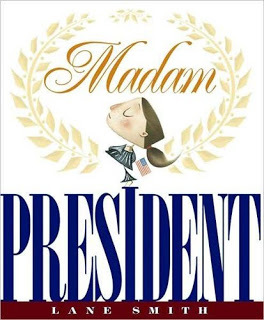
With this in mind we looked to the library bookshelves for politically themed picture books to expand on this new knowledge.
Finding books which dealt with the real aspects of how the political arena operates was limited, we found just two. To understand the workings of an election The DK Children’s Book of Politics and Usborne's Politics for Beginners have between them, all the factual information a young voter might need covering elections, voting and government as well as issues on freedom of speech, feminism and my sons current favourite topic, fake news. The Usborne book includes tips on how to debate and importantly, a glossary.
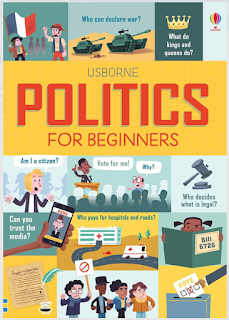
But for a wider feel of politics and a more general understanding of some of the big issues we face in the world there are plenty of pictures books to help young voters.
Picture books can be surprisingly political and sometimes strongly politicised but many carry their messages of social justice in beautifully subtle and imaginative ways. Social issues are an inherent part of children’s literature and as we've looked at many times at the Picture Book Den, picture books have the unique ability offer a safe place to explore complex social issues through imaginative writing and clever illustration. So covering a myriad of topics from gender equality to civil rights, the arms race to the protection of the environment, here are a few of the favourites we found on the shelves in the library.
The first two picture books we enjoyed take a look at the presidency itself. In 'Madam President', Lane Smith lays out the civic minded qualities needed by any future president through the day in the life of a little girl as she imagines being the president herself.
 from Madam President by Lane Smith
from Madam President by Lane Smith
Sofia is a Mexican American girl who who becomes the voice of change for her community in Andrea Beaty's 'Sofia Valdez, Future Prez', illustrated by David Roberts. Taking on the dangerous Mount Trashmore, she campaigns for improvements for her local area and courageously takes her plans to the city hall.
 from 'Sofia Valdez, Future Prez' written by Andrea Beaty, illustrated by David Roberts
from 'Sofia Valdez, Future Prez' written by Andrea Beaty, illustrated by David Roberts
One of Dr Seuss’ lesser known picture books 'The Butter Battle Book', 1984, is an anti war story, particularly addressing issues around arms races and nuclear weapons, told through the Yooks and the Zooks who share a love of buttered bread. Difficulties arise between the two groups because they enjoy the bread in different ways which results in the threat of mutual destruction, but told in Seuss's joyful and funny rhyming text and familiarly wacky illustrations.
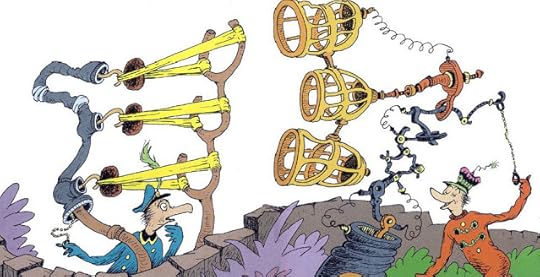 from The Butter Battle Book by Dr Seuss
from The Butter Battle Book by Dr Seuss
In Yertle the Turtle, Seuss tackles dictatorship and oppressive cruelty. Yertle is the king of the pond but is tired of the stone that he uses as a throne and commands the other turtles to stack themselves “in a nine turtle stack” so he can see farther and expand is kingdom but to the detriment of others. Luckily, a simple but courageous ‘burp’ from Mack at the bottom of the stack topples Yertle’s empire.
 from Yertle The Turtle by Dr Seuss
from Yertle The Turtle by Dr Seuss
From the empowering ‘Little People, Big Dreams’ series of autobiographical picture books, 'Rosa' depicts the life of civil rights activist Rosa Parks whose courageous refusal to give up her seat on a segregated bus to a white man lead to the end of segregated transport in America.
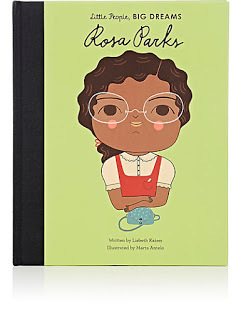
One of our favourite household books is 'No Room For Napoleon' written and illustrated by Adria Meserve. Napoleon is a dog with big ideas but bad manners. When he lands on an island paradise he insists on inflicting his vision for the island which escalates to building himself a fortress, destroying the island environment and forcing out the friends who live there. A story about appreciating good citizenship, environmental issues and the meaning for friendship.
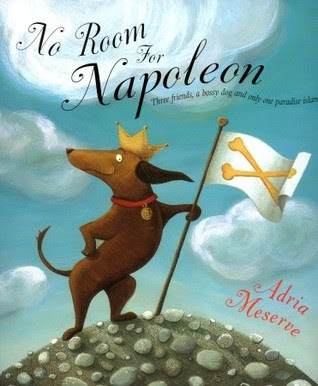
This list would not be complete without reference to David Robert's 'Suffragette The Battle for Equality'. Beautifully illustrated picture book carting the history and making the centenary of the first women winning the vote in the UK.
 from 'Suffragette The Battle for Equality' by David Roberts
from 'Suffragette The Battle for Equality' by David RobertsAnd considering the plight of current British politics, take a trip to 'The Little Island' for a powerful story about building bridges not walls and nurturing respect not resentment. By Smriti Prasadam-Halls and Robert Starling, a story for our times.
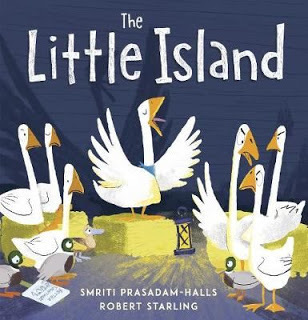
Garry Parsons is an illustrator of picture books.
@icandrawdinos
November 1, 2020
Virtual Reality
Being a school visiting author is something you learn on the job. You can spend all the time you like getting your PowerPoint presentation looking snazzy, but there is nothing like standing in front of a whole school assembly to really focus your mind. Fielding random questions, retaining the interest of a distracted child or getting a teacher to look up from their marking are all things you learn to deal with by doing them.
And then 2020 happened. Things are different now. I haven’t stood in front a school assembly since March. I’ve seen that some authors are still managing to physically go into schools but all of my events have now been put online and so I have had to relearn how to do my job. So, in no particular order, here are some things I’ve learned about doing virtual events.
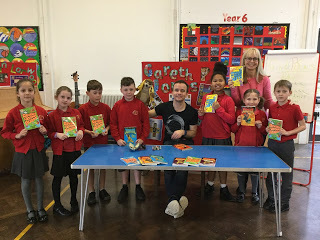 YOU ARE HERE!
YOU ARE HERE! Sitting in your own room, drinking your own coffee from your own mug, you might not feel like you are actually there ‘in the school’ but it’s worth remembering that’s exactly where you are. I watched a clip of a recent class visit that and was taken aback by how it looked from their point of view. As detached as you feel, try not to acknowledge it. This week, when I begin my events I will say, “Thank you for having me in your classroom. It’s lovely to be here.” If I can, I remark on the work I can see on the walls. Don’t draw their attention to the technology that is making it possible. Don’t sell it as a less good version of an actual visit. Act like you are there… and you will be.
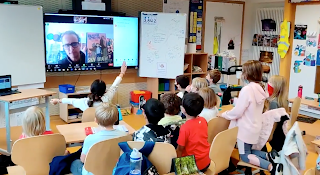 Q&A
Q&AI never appreciated the value of being able to point at a child and say, “Yes?” until I could no longer do it. With virtual events, there is no point pointing. It’s pointless. This threw me to begin with as my events are basically hour-long Q&A sessions with songs, games and readings thrown in along the way, but I have discovered the solution can actually be quite a positive thing. I now have a teacher in the room, choosing who should speak next. This means more work for the teacher (sorry teachers), but it also ensures they are fully emersed in the session and an engaged teacher will get more of the sessions and ensure that their pupils do too.
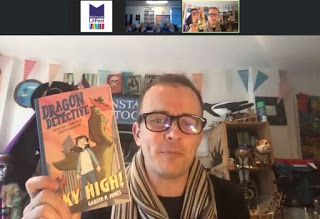
PRE-RECORDED VIDEOS
Sometimes a school or library will request a pre-recorded session. My preference is for these to be much shorter. We all know from our own online habits that people have a very short attention span, but sometimes schools or libraries want something longer. Recording these are likely to make you feel like you’re going crazy as you prattle on and on, without any audience to react. I have wondered if it might be a good idea to record a generic event, then add on a bit that specifically mentions the school, but I haven’t done this yet and it would take a bit of editing I suppose. Another useful thing to mention is that if you are doing a long piece, it makes sense to record it in sections because it can be tiresome trying to send it as a massive chunk.
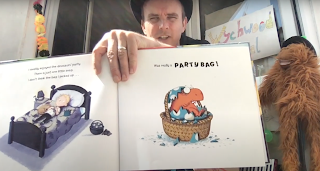 READINGS
READINGS A couple of weeks ago, on a virtual visit, I read out a short story I had written about Halloween. I couldn’t really gauge how well it went down until, last week, the teacher contacted me to tell me that the pupils had loved the story and all written their own. He shared one with me. It was brilliant and it reminded me that readings work just as well virtually as they do in person. I don’t do a lot of reading with KS2 events but with picture book events it is essential. I am not sure of the best way to do it yet. It might be that from the class’ point of view, sharing a screen so they can see the book works best, but I think I’ll keep trying it as a reading of the actual book at the moment because I think a reading can be as much as about the delivery as the book itself. Keep your reading interactive and remember where your camera is. Hold the book up and show them the details.
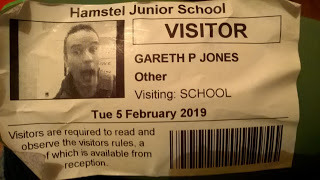 TIMING
TIMING With physical school visits, it is important to give yourself enough down time between events to reset yourself, but also because sometimes you’re dashing between classrooms. It is the same with virtual visits. Just because you aren’t physically dashing anywhere, you still need to schedule your day so that you are ready to give each event your everything.
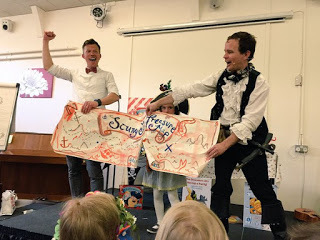 LOOKING FORWARD
LOOKING FORWARD There are lots of aspects of virtual visits that I haven’t considered here. I am not an illustrator so haven’t had to investigate the best way of live drawing. And as for many of us, school visits are an important source of book sales for me, and I am yet to work out the best way of encouraging book sales in this new world. I’m sure there are lots of things I will learn over the next few months about the best way to do this stuff. None of us knows how long it will be like this, but while it is, if we can continue to support each other, then we can continue to visit schools and be super spreaders of books and literacy. So, if you have any thoughts on this subject, please do feel free to share them below.
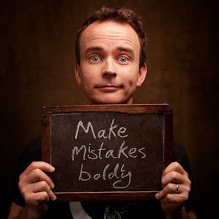
Gareth P Jones is an author of over 40 books for children of all ages. He has two picture books coming out in 2021 (published by Egmont). If you would like to book a virtual visit, he can be booked via Authors Aloud or contacted directly at garethwrites@hotmail.com.
October 26, 2020
WHY WRITING (AND NOT JUST BOOK DEALS) CAN MAKE YOU HAPPY! by Clare Helen Welsh
We all know that writing is tough. Really tough. Sometimes it’s a wonder why we keep putting ourselves through it, which got me thinking… why do we?
The science behind what happens when we write and partake in writing activities is actually quite fascinating. Our brains and bodies are constantly undergoing complex chemical processes that we can modify with simple, daily actions. As it turns out, being part of the writing community releases lots of happy chemicals into our brains, which make us feel good and are good for us, too.
Let’s dig a little deeper.

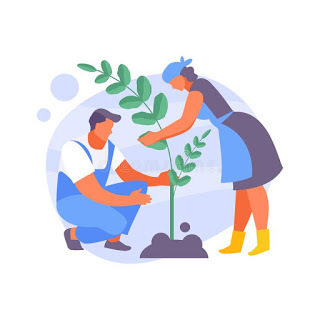
Dopamine:
Dopmaine is known as the reward chemical. When you sign a deal, hit a word count target, or finish a draft you receive a pleasurable hit of dopamine in your brain that tells you you’ve done a good job. This is why it is important to set SMART targets for yourself and celebrate little wins. No matter how big or small, when you complete a task the dopamine is released and the chemical does its ‘feel good’ job.
You can also get a dose of dopamine when you perform self-care tasks or acts of kindness toward others. Volonteering has been shown to increase dopamine as well as having other long-term health benefits. So those of you who volunteered to be mentors in the Write Mentor Agent Showcase, or who volunteer for roles in organisations like SCBWI, will be receiving a dollop of happiness thanks to dopamine. See? Your generosity and kindness goes a long way!

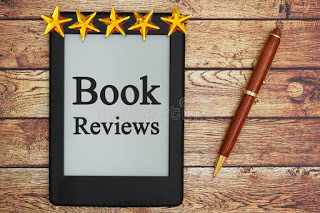
Oxytocin:
Oxytocin is known as the love hormone. You can get it by playing with a dog or a baby, but also from giving a compliment. It helps us adapt to emotional and social situations and contributes to us feeling close and bonded with others. The writing community is a wonderful place – if you’re a part of it, you’ll know exactly what I mean. Oxytocin is the reason why it feels good to tell an author or illustrator you loved their book, to wish them well on publication day or to post a review telling them all the reasons you LOVE their work. Yes, it’s as easy as that! A dose of this happy hormone is released just by you being kind and thoughtful to another person.
Oxytocin is important for us, too. It helps us form trusted relationships with our peers, which in turn supports us to take risks and stay resilient in the face of challenges – of which, of course, there are many in the writing world.

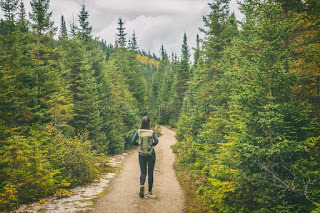
Serotonin:
Serotonin is a mood stabilizer. We can get it from exposure to sunlight and in activities such as walking and swimming.
If you’re a creative who likes to take outdoor ‘troubleshooting’ breaks, to think on a problem or solve a plot hole, the serotonin that is released will also be helping to improve your mood.
Is anyone else a creative napper? If I’m struggling to find a way forward, I often close my eyes and take a short daytime nap where I dream about my story or character. Not only does a nap boost my energy levels, a creative nap can also help me connect with my subconscious, which is great if you believe you already have all the answers to those pesky plot holes somewhere in your brain! Serotonin rewards us when we part-take in mediation-type activities, so you’ll also get a burst of happiness chemicals as well as feeling energised and inspired, too!
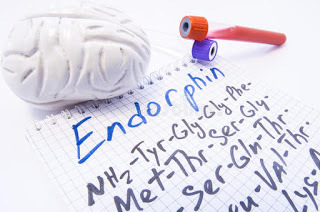

Endorphins:
Endorphins are known as the pain killing chemical because they release a brief sense of euphoria that masks physical pain. Laughter and exercise are two simple ways of increasing your endorphins, which have been linked to relieving the effects of anxiety and depression.
When it comes to writing, if you’re working on a comedy or writing a funny scene and making yourself laugh, you’ll be activating a good dose of endorphins. Reading funny books will also boost your happy hormones. In a race, endorphins help you ‘power through,’ pushing harder and further to achieve your goals. So, as well as making you feel good, endorphins will be helping you stay motivated on your writing journey – which let’s face it, can be a bit of a marathon!
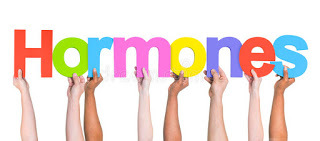
So, it turns out there’s a whole lot more to a writer's happiness than just the book deals! Together these four happiness chemicals create desirable brain states and feelings, that make us feel good, and keeping us coming back to writing again and again, despite the many challenges it brings. They're pretty good for our health, too.
Now you understand how writing affects your feel-good hormones, you might be able to trigger them more often!
So, what are you going to write today?
A blog? A journal? A letter? A chapter of your WIP? Some poetry or free writing? Perhaps you’re going to take a creative nap, take a brisk walk or write a review for a book you enjoyed recently.
Whatever it is… enjoy!_+
You can read more about ‘Happiness Chemicals and How to Hack Them’ here.
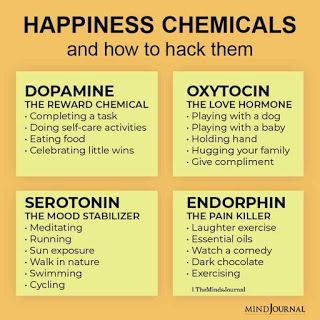
Clare is the author of fiction and non-fiction picture books and early readers. She is passionate about using creativity and the arts to promote a love of learning and emotional well-being. Clare also works as a Write Mentor tutor, is the Write Mentor Picture Book Writer in Residence (2021) and offers a manuscript critique service and 7 week Picture Book Course.
Clare is represented by Alice Williams of Alice Williams Literary



